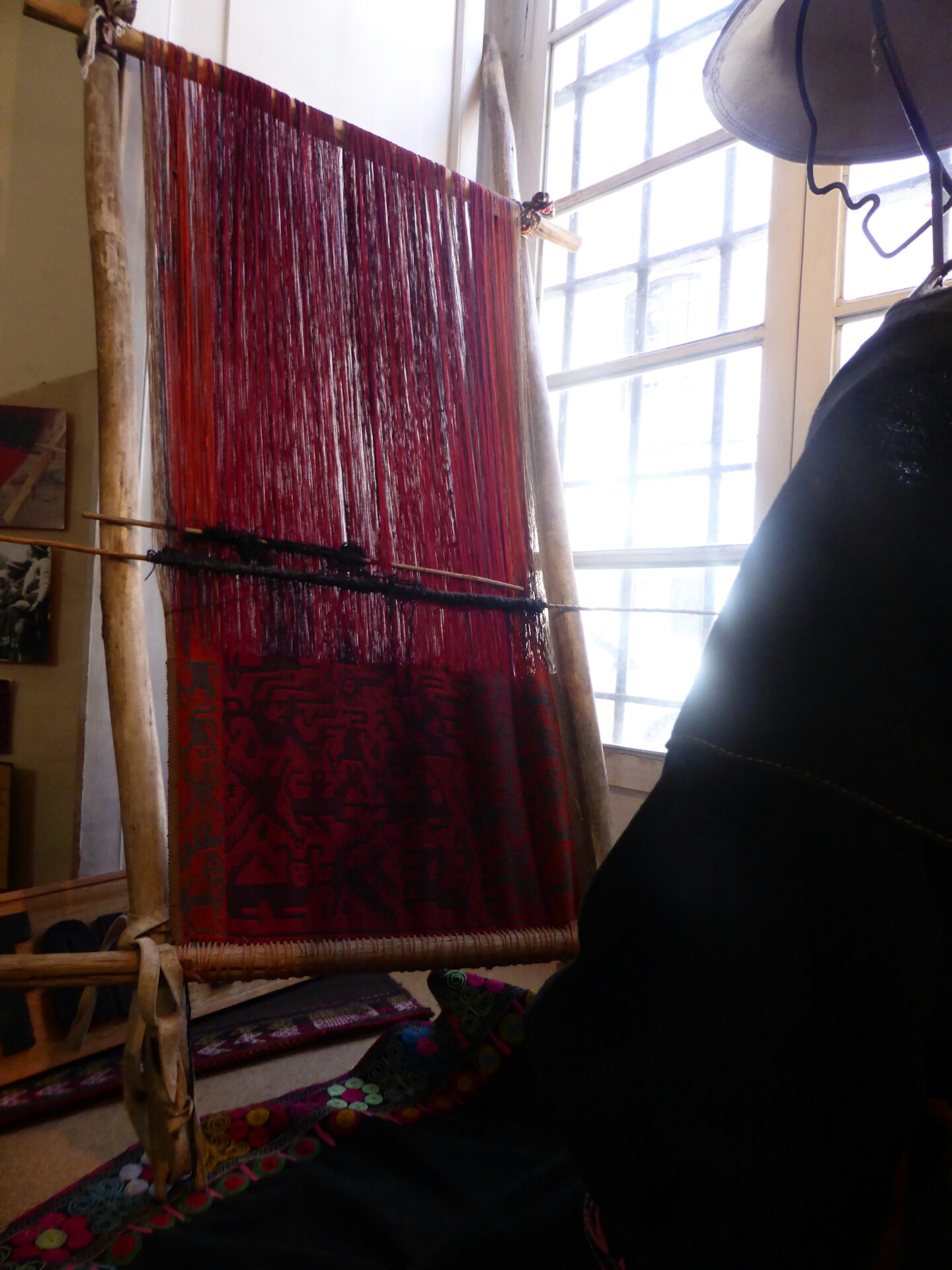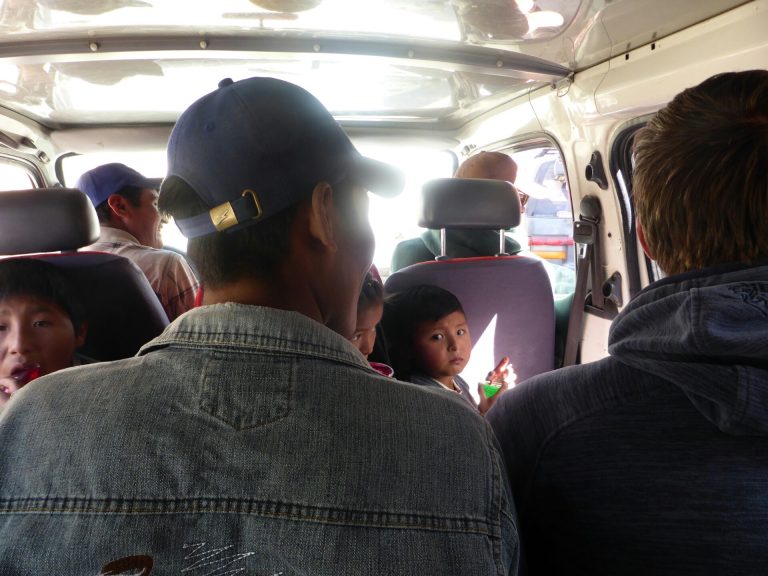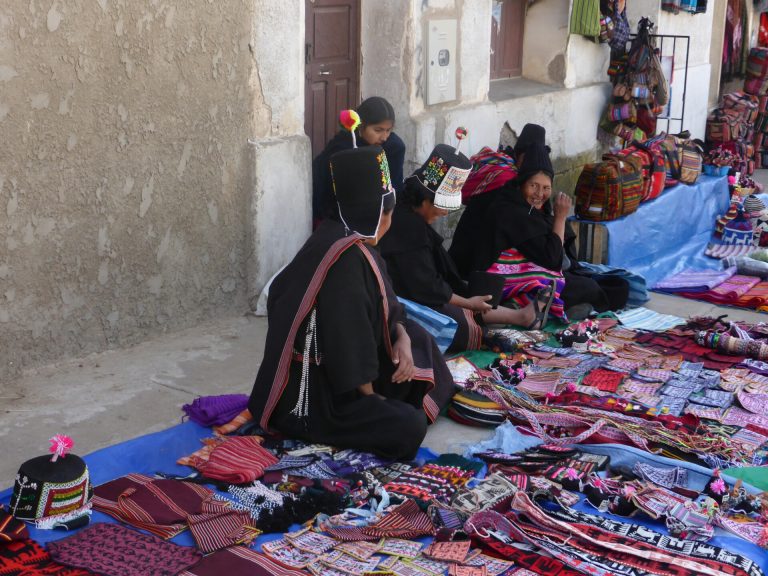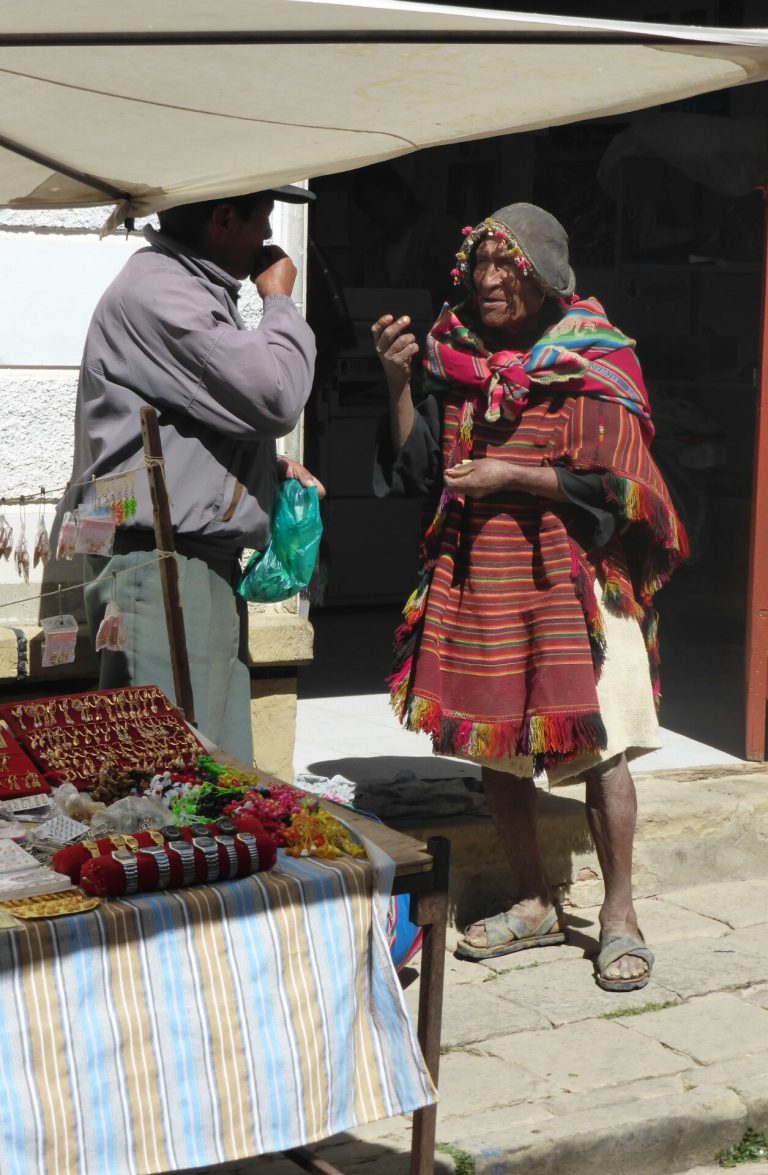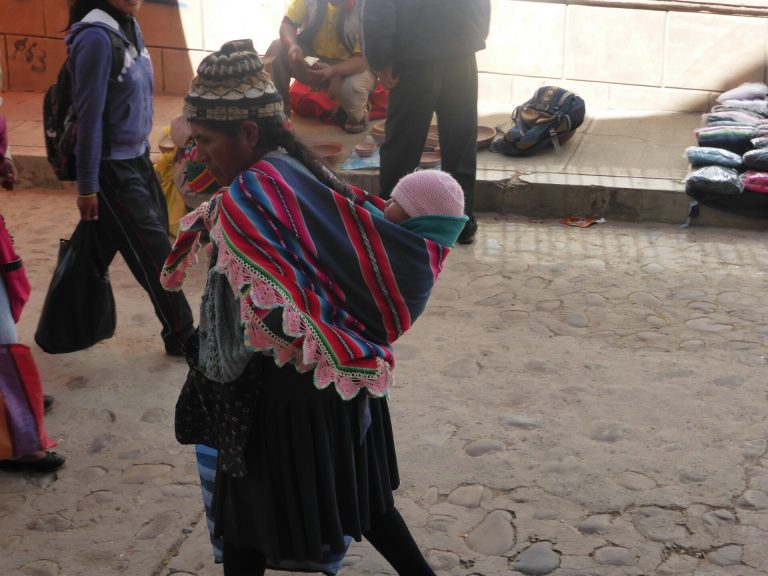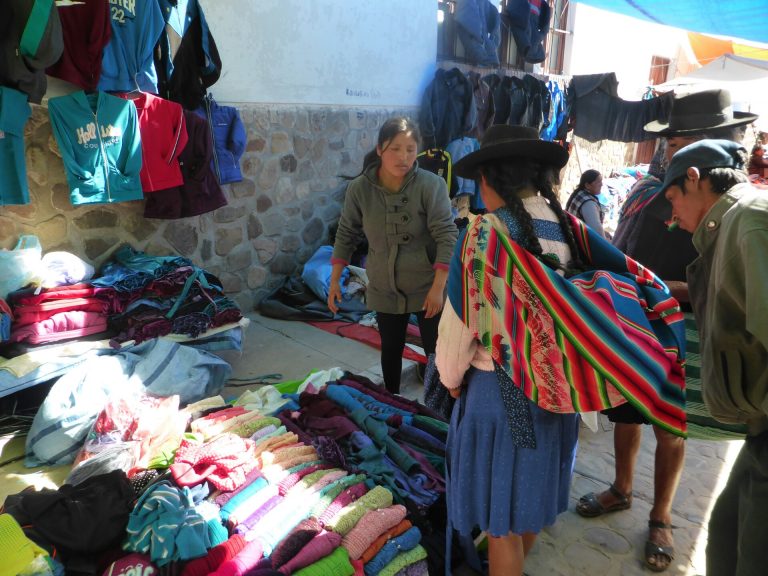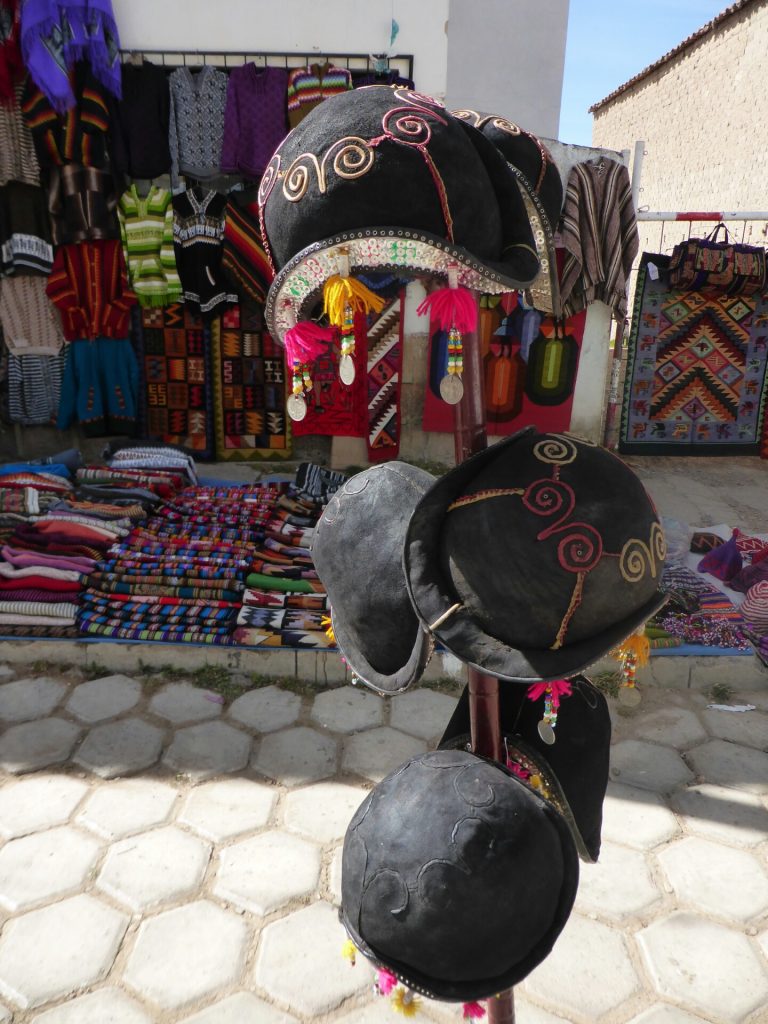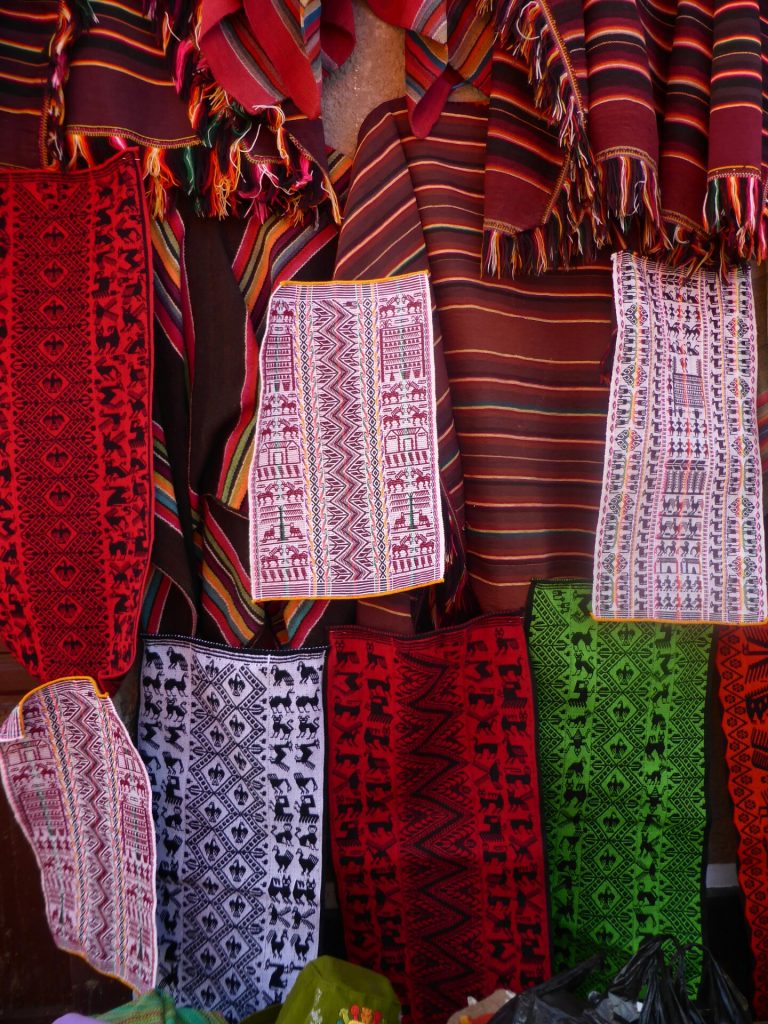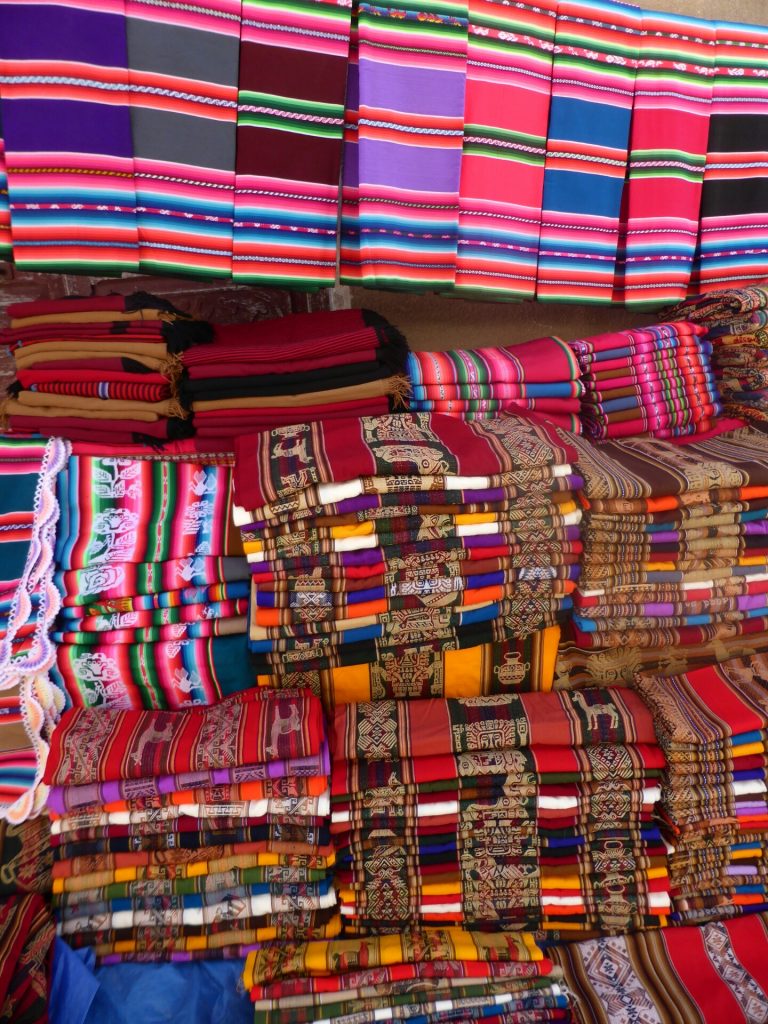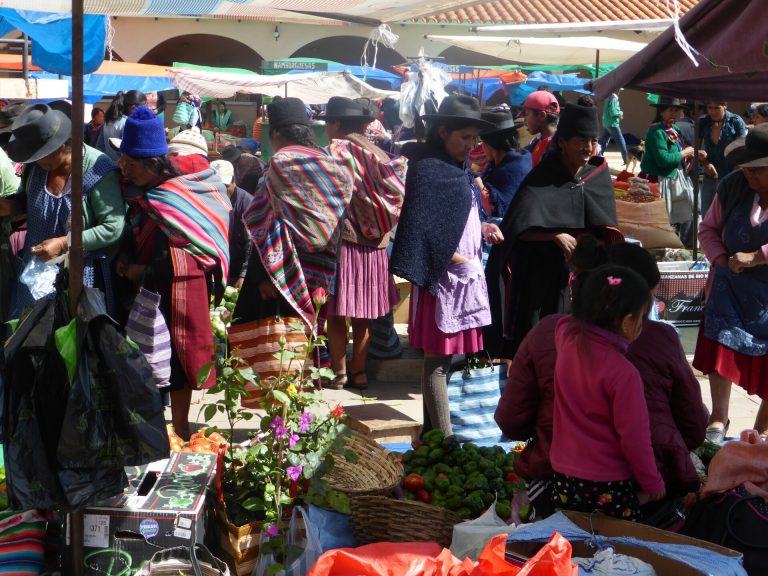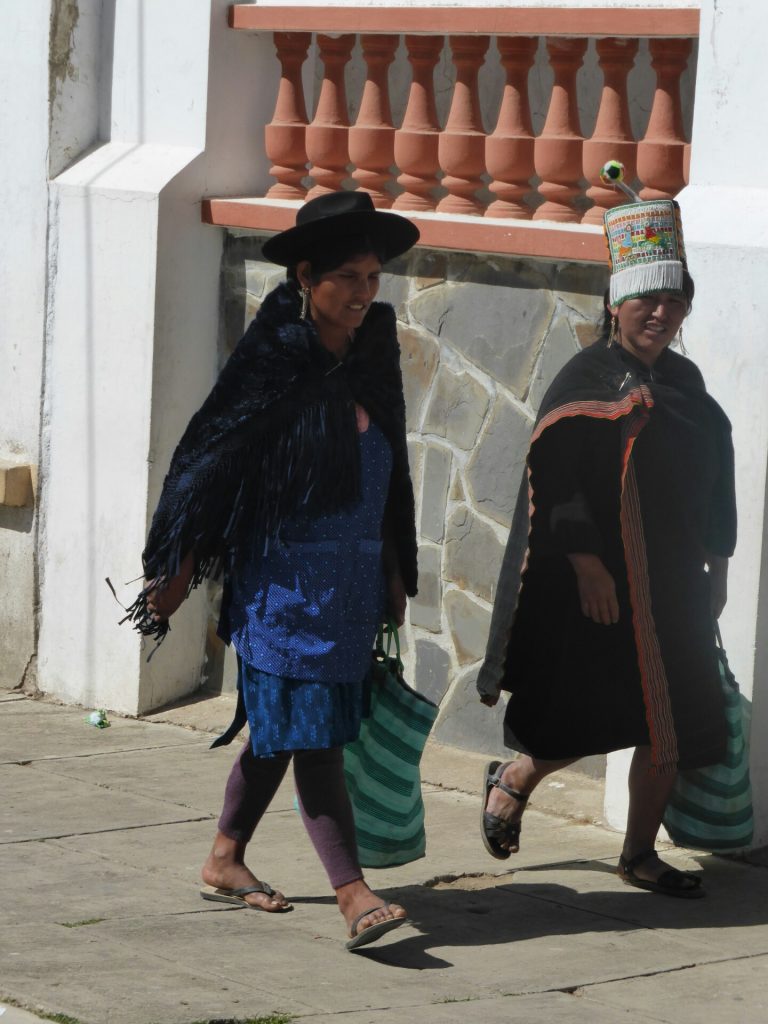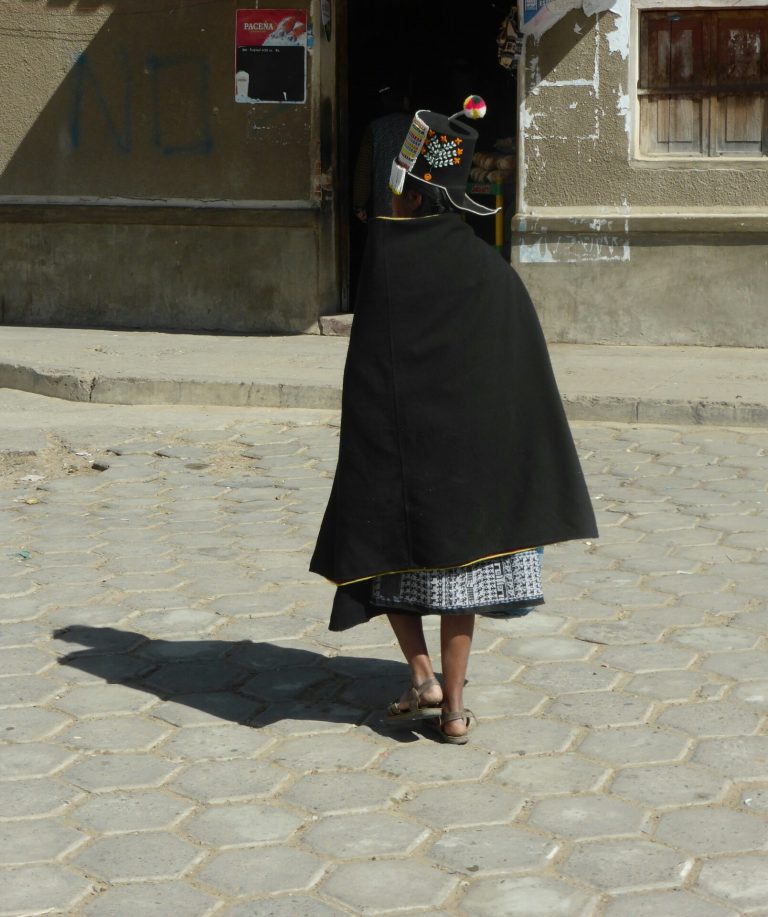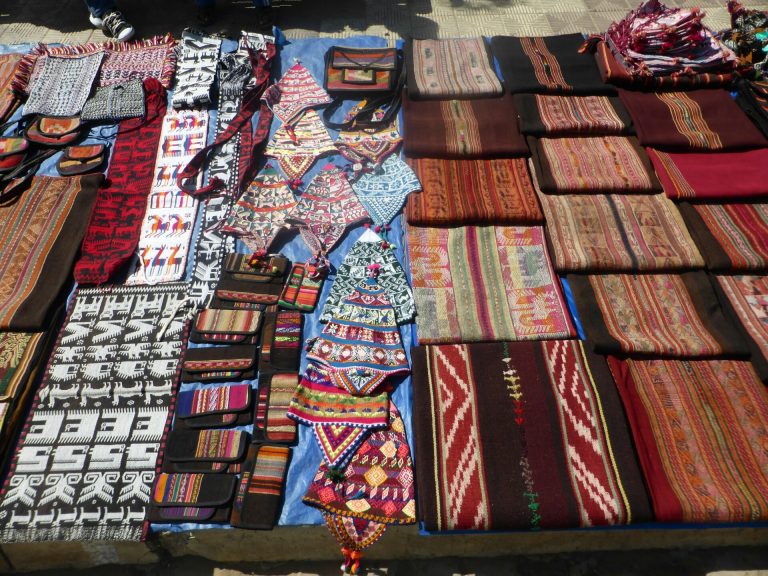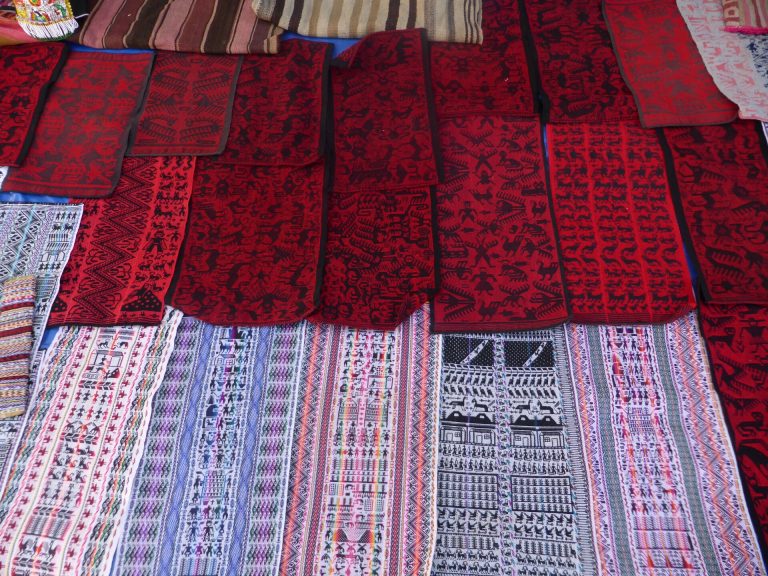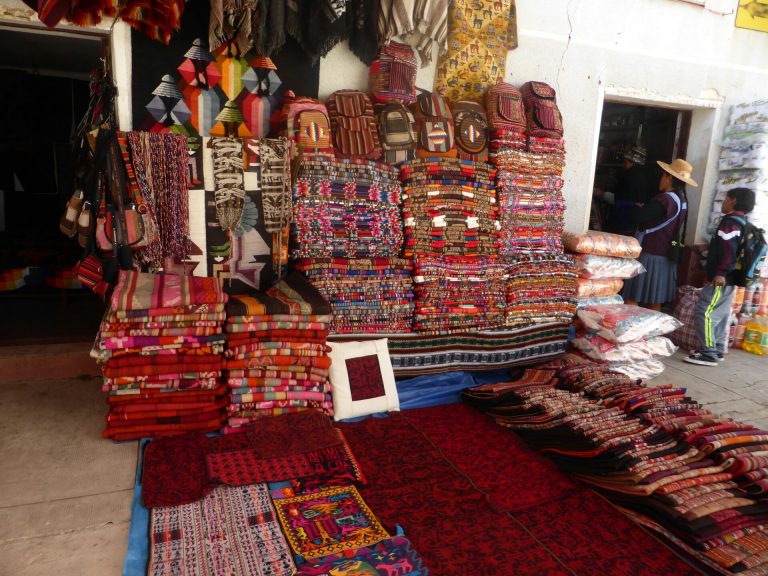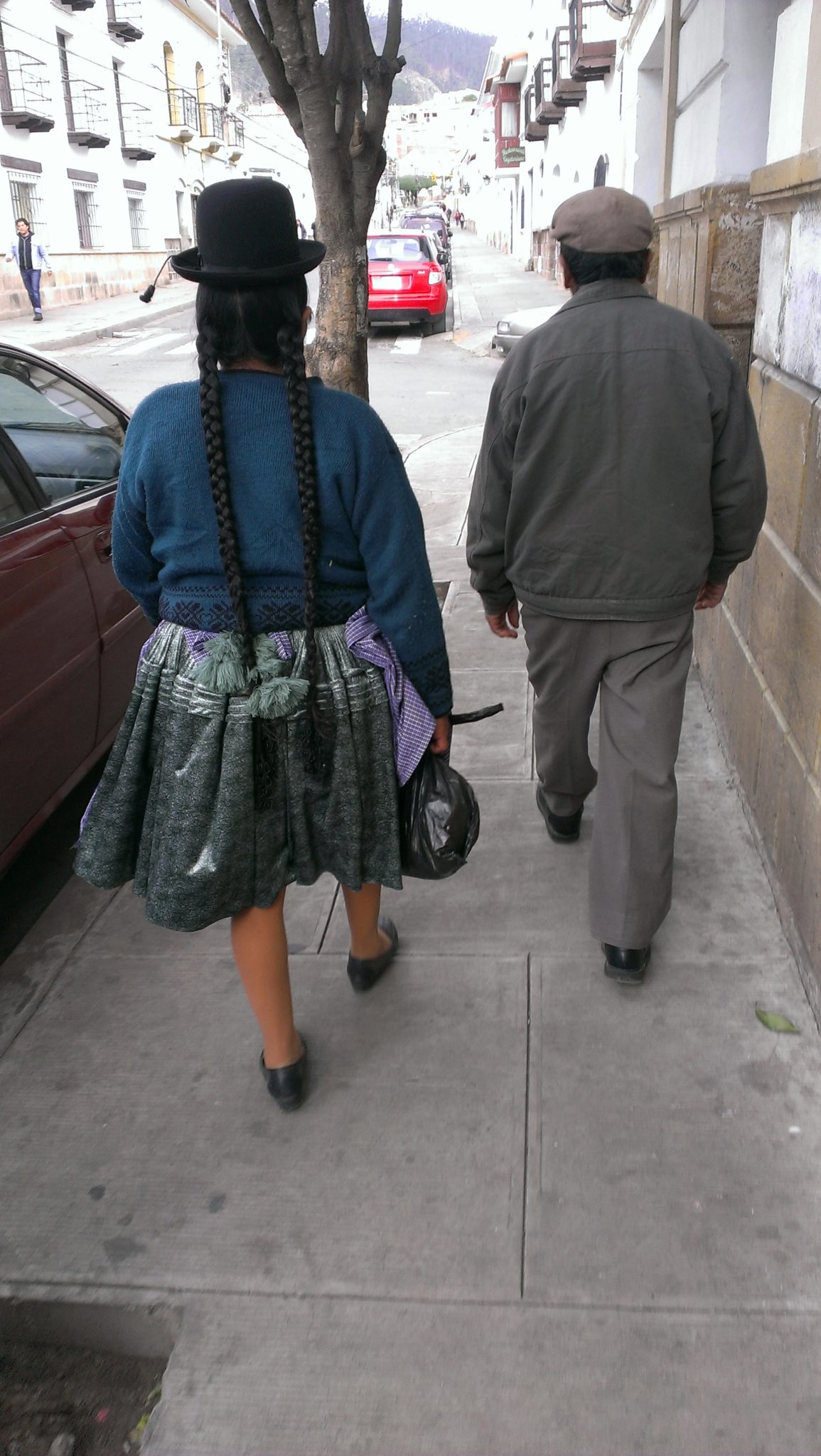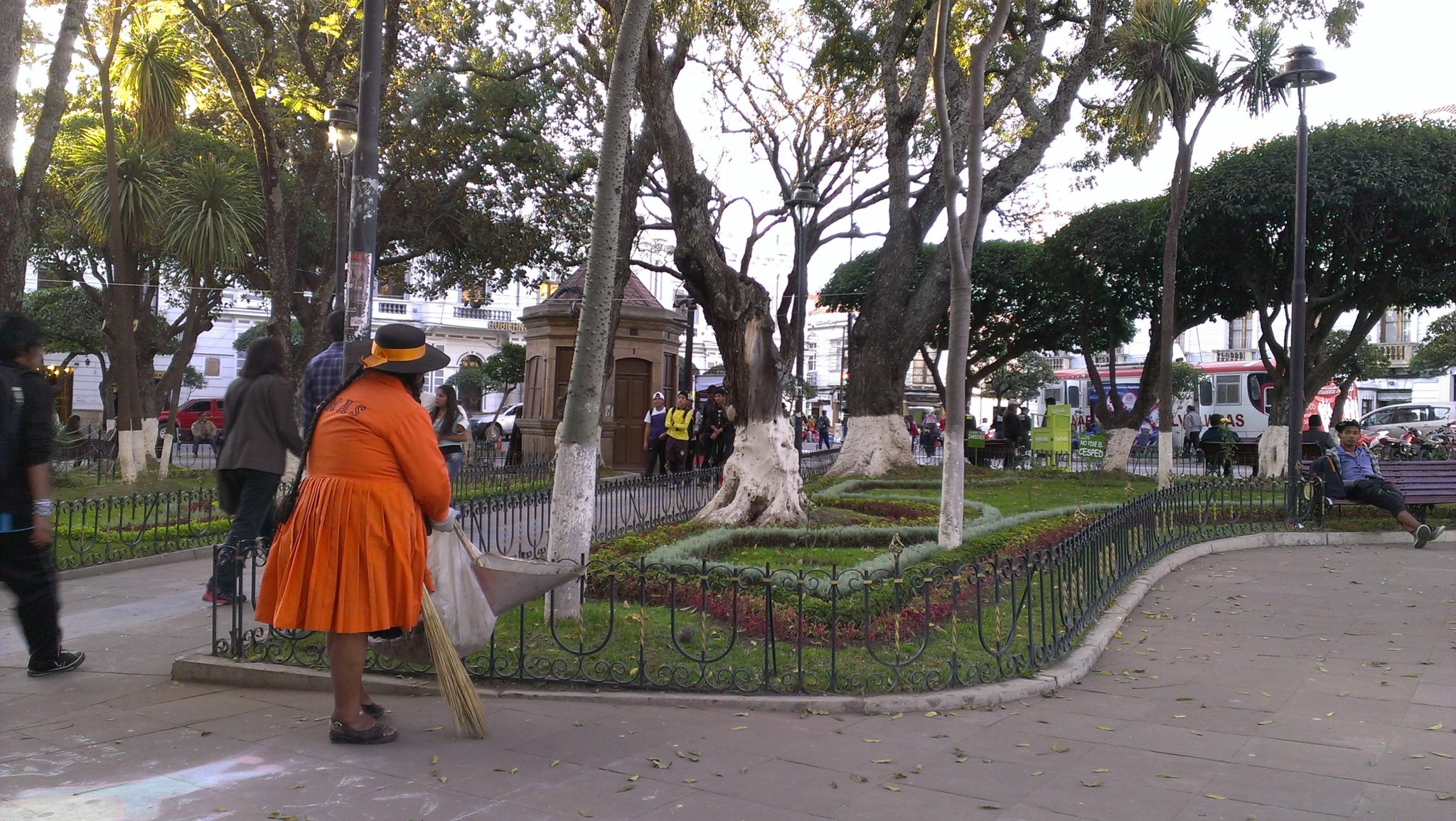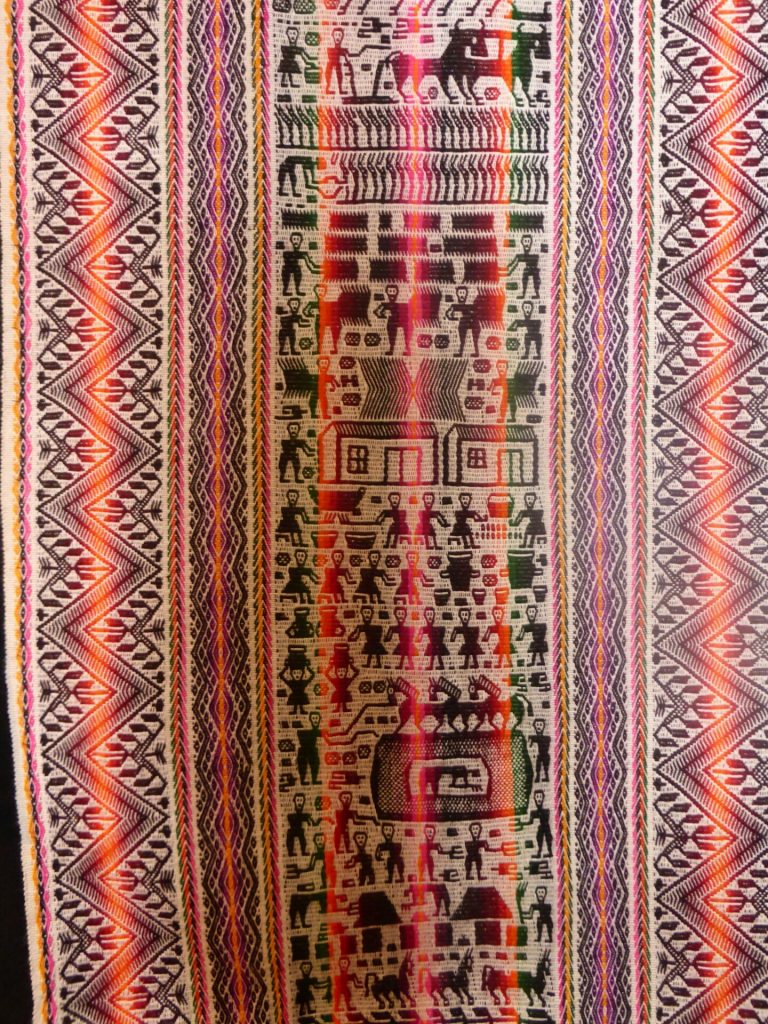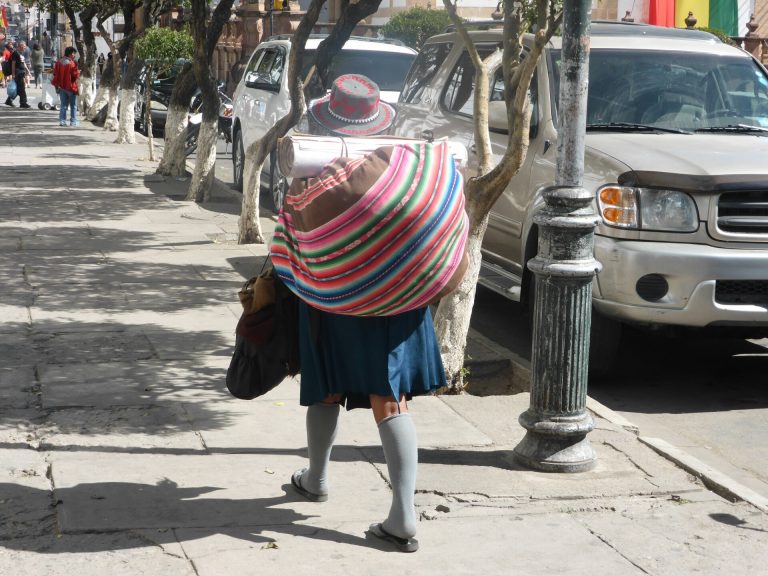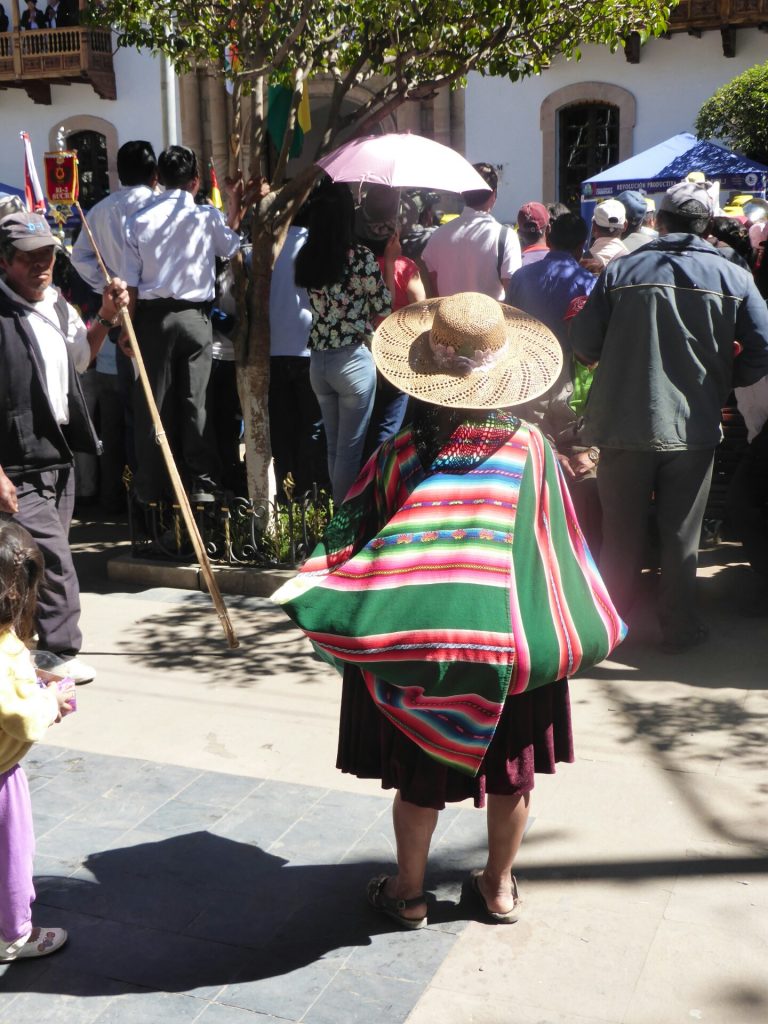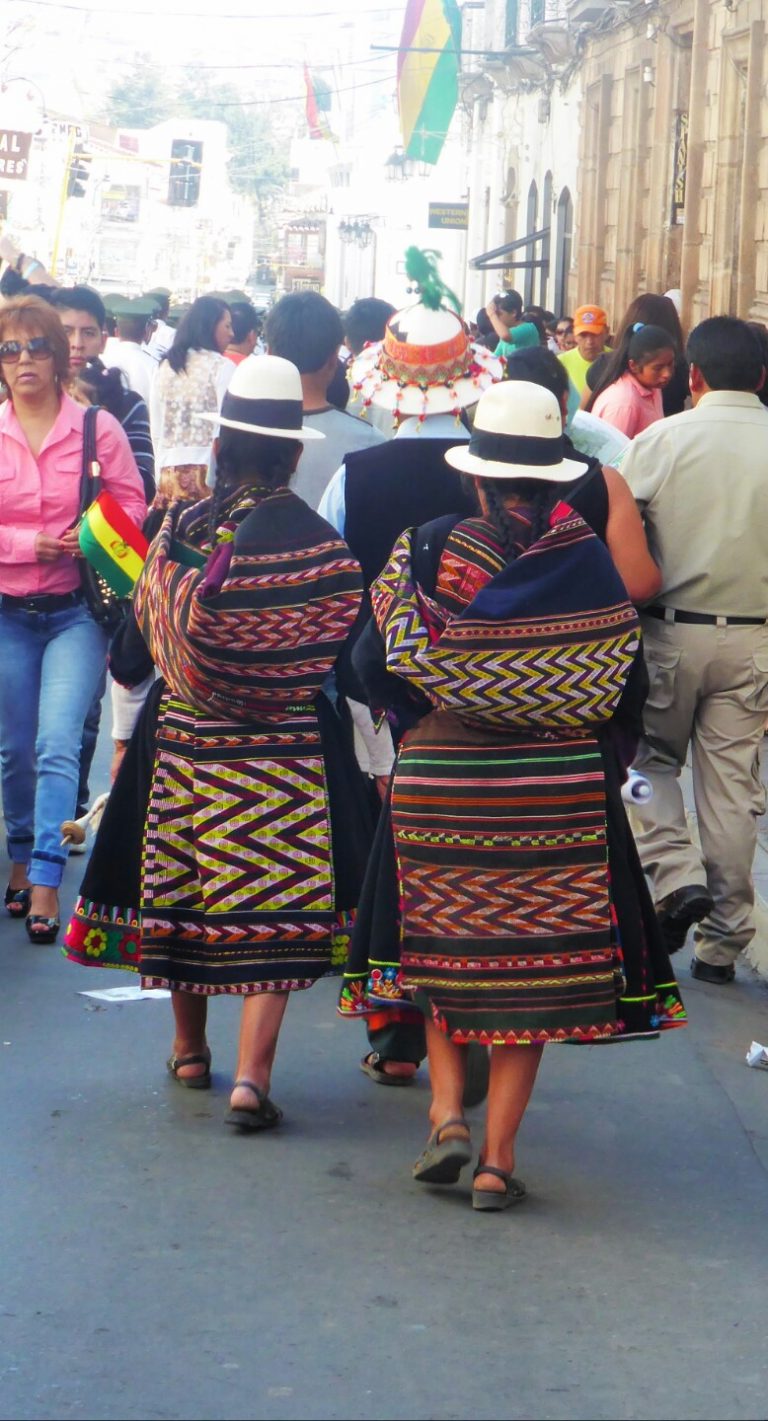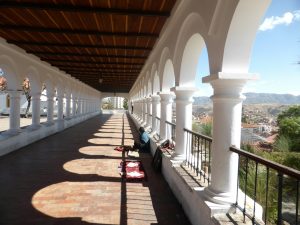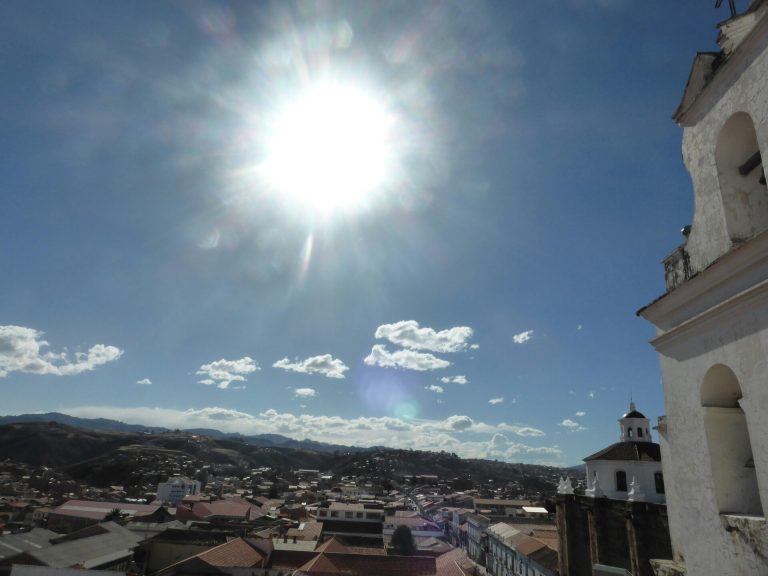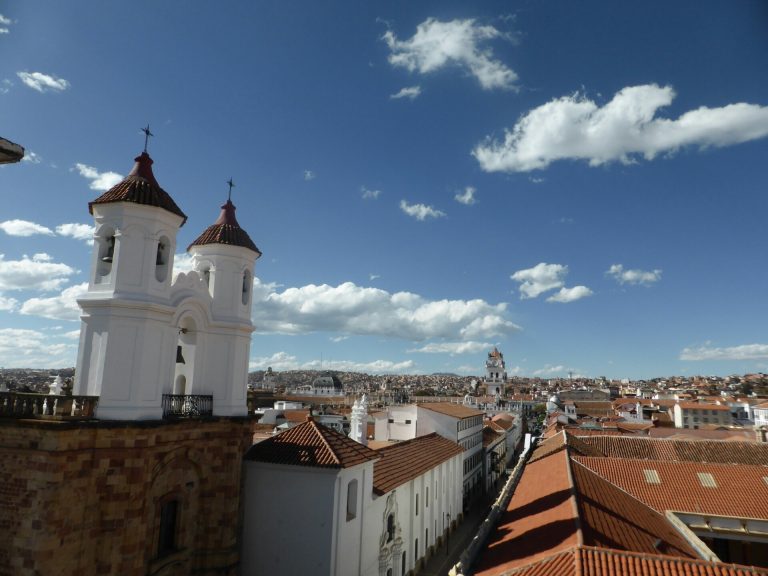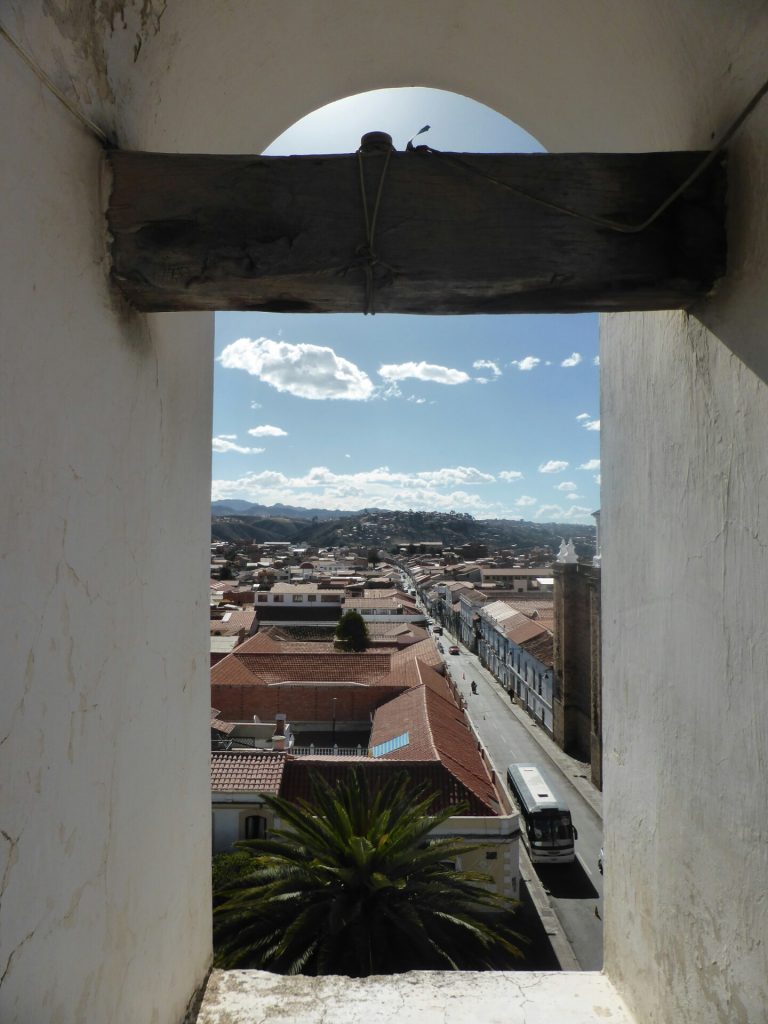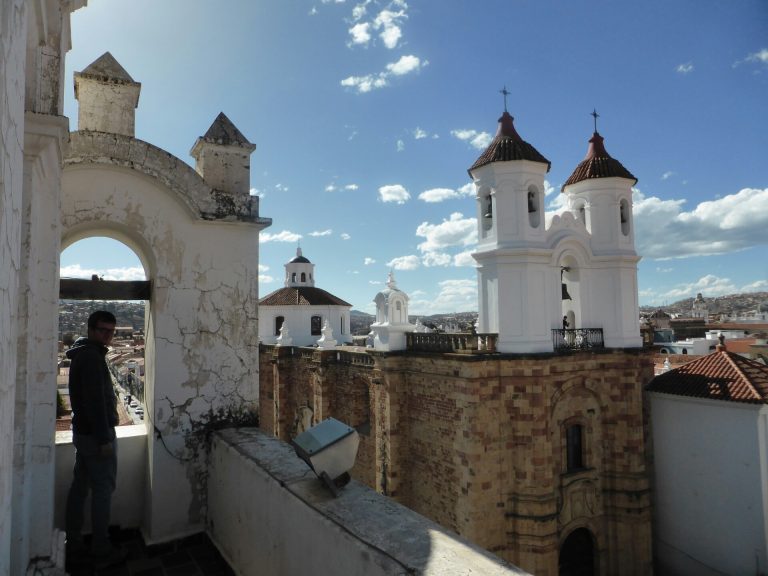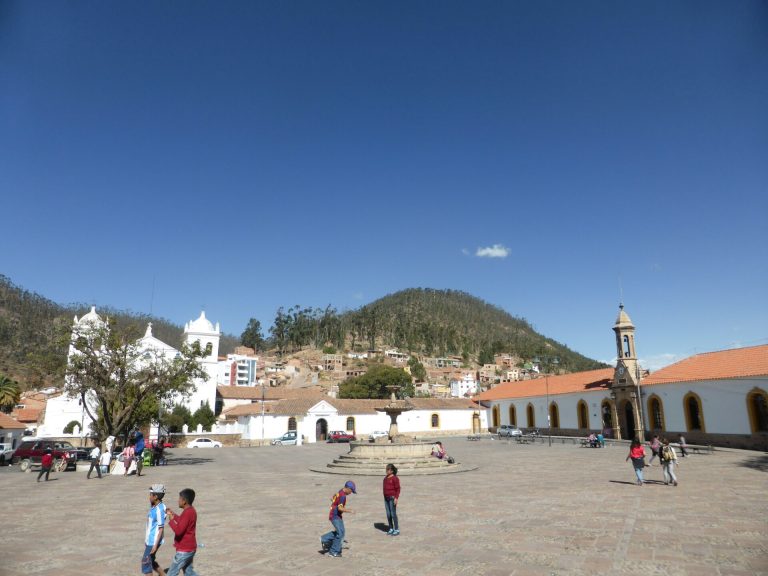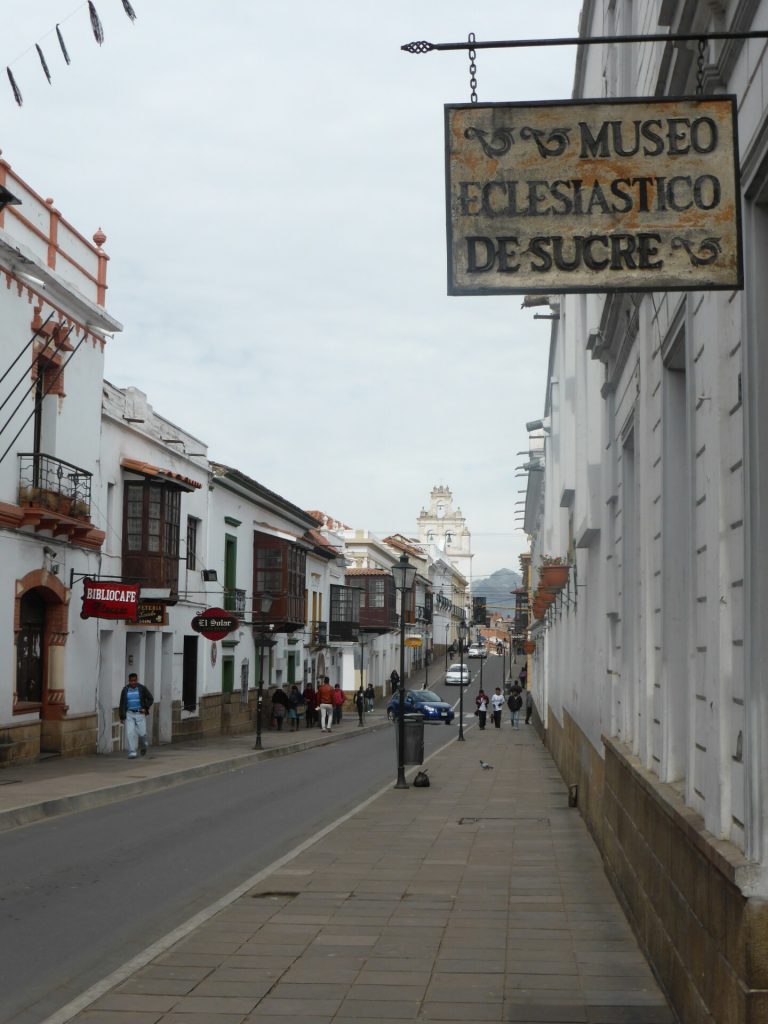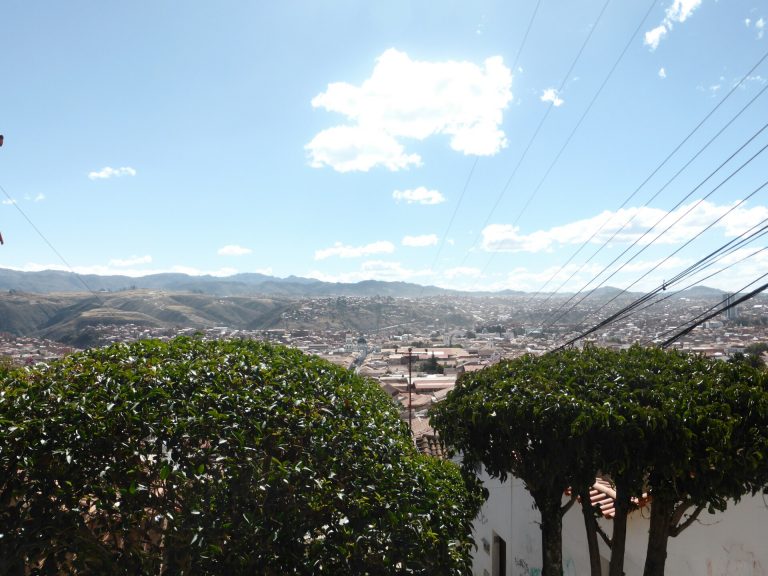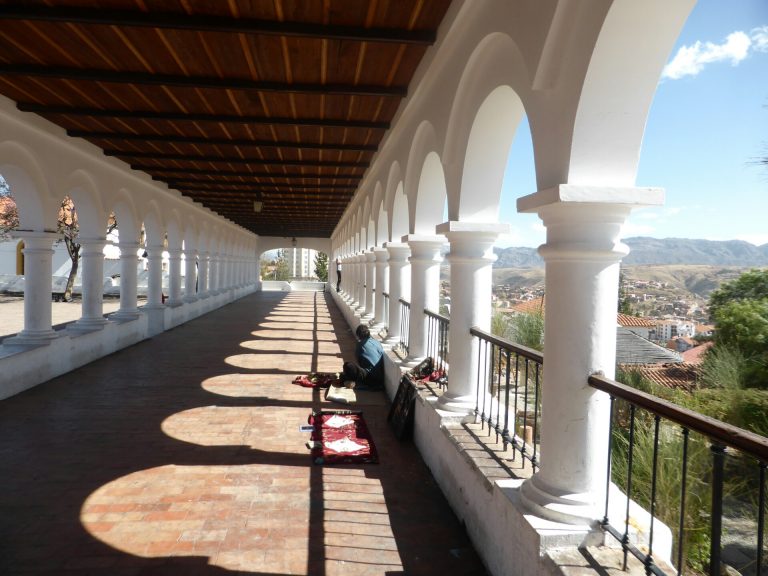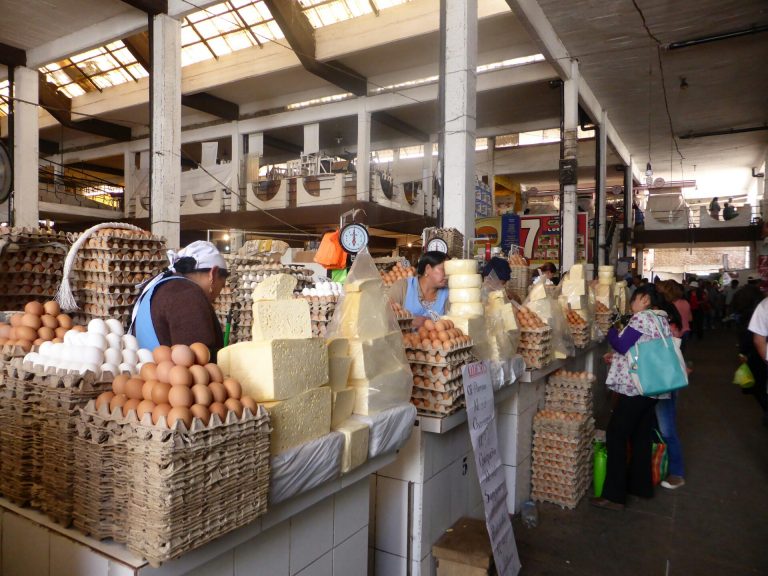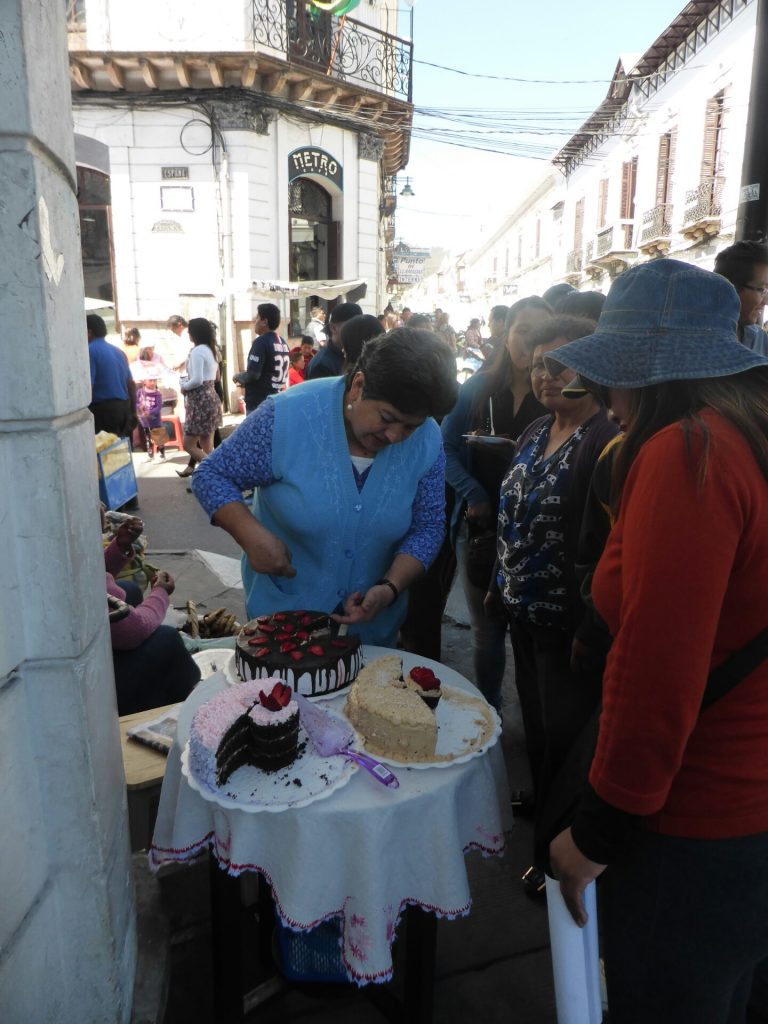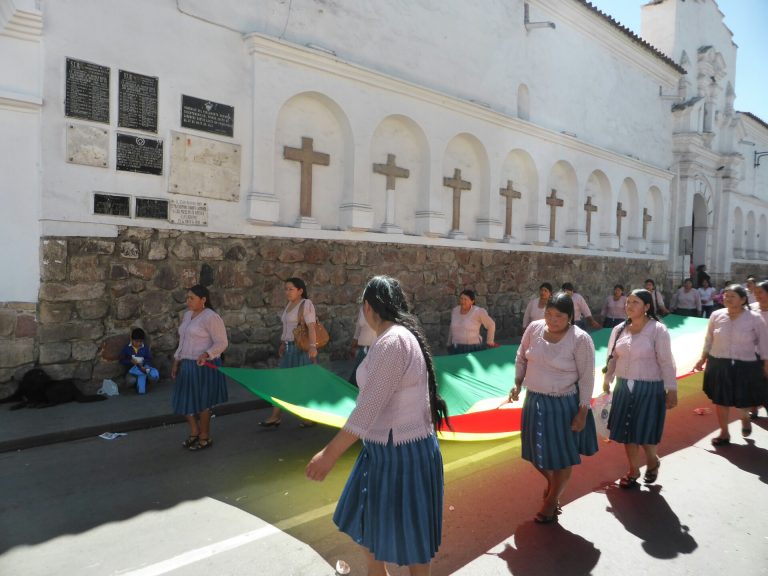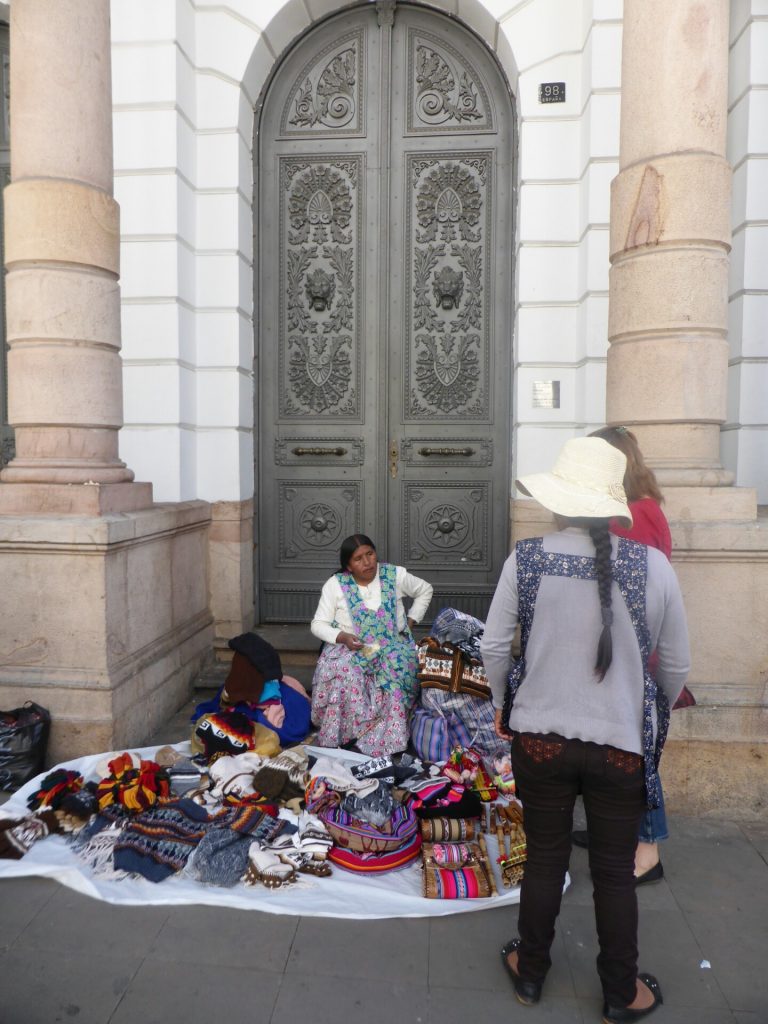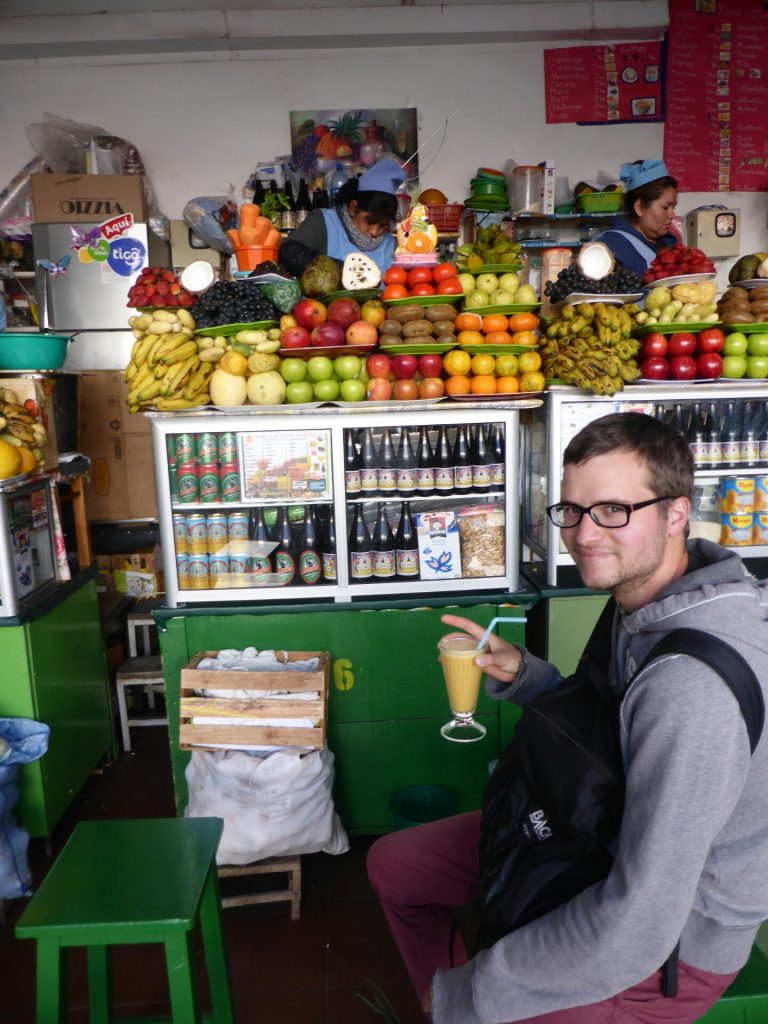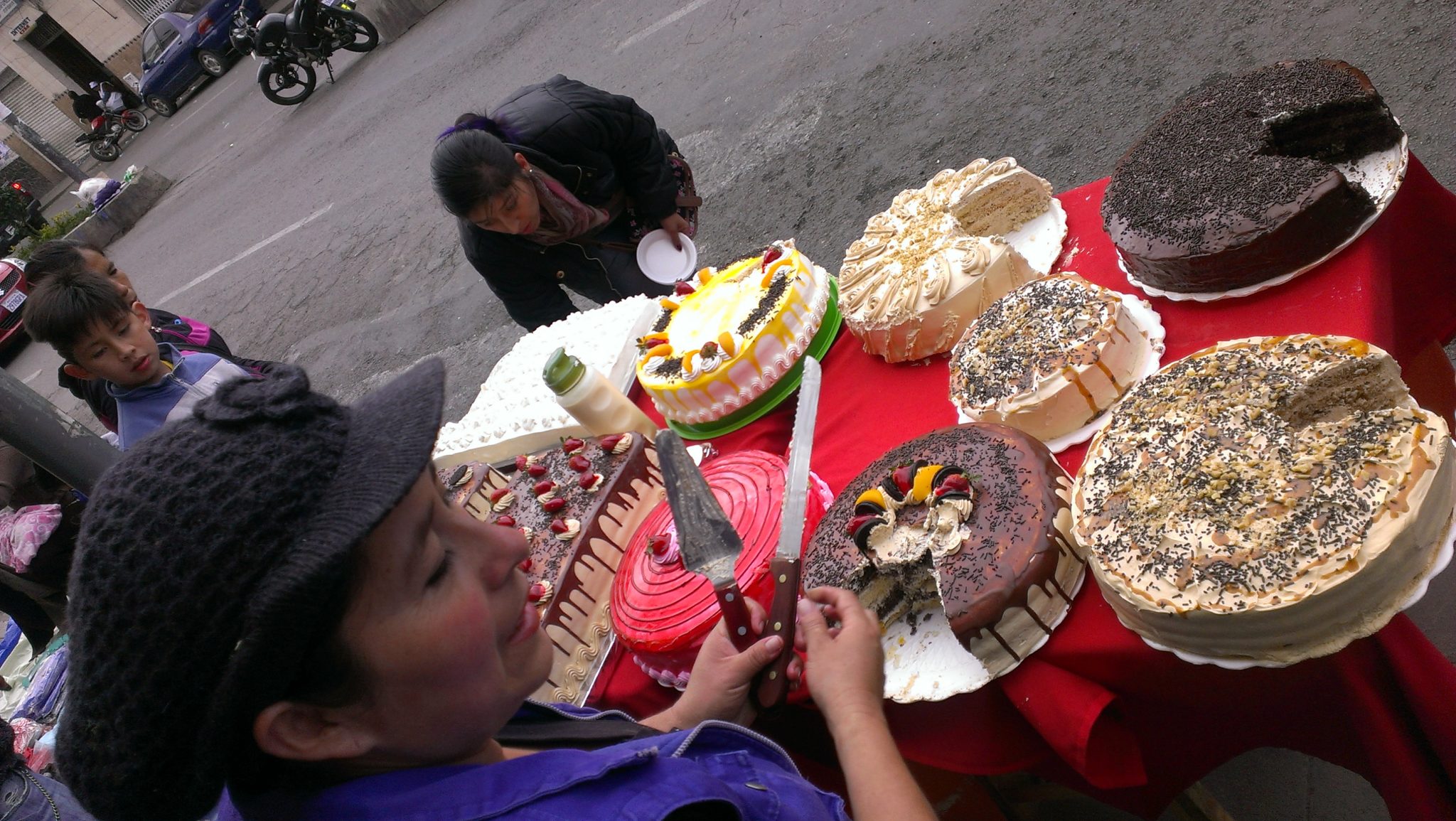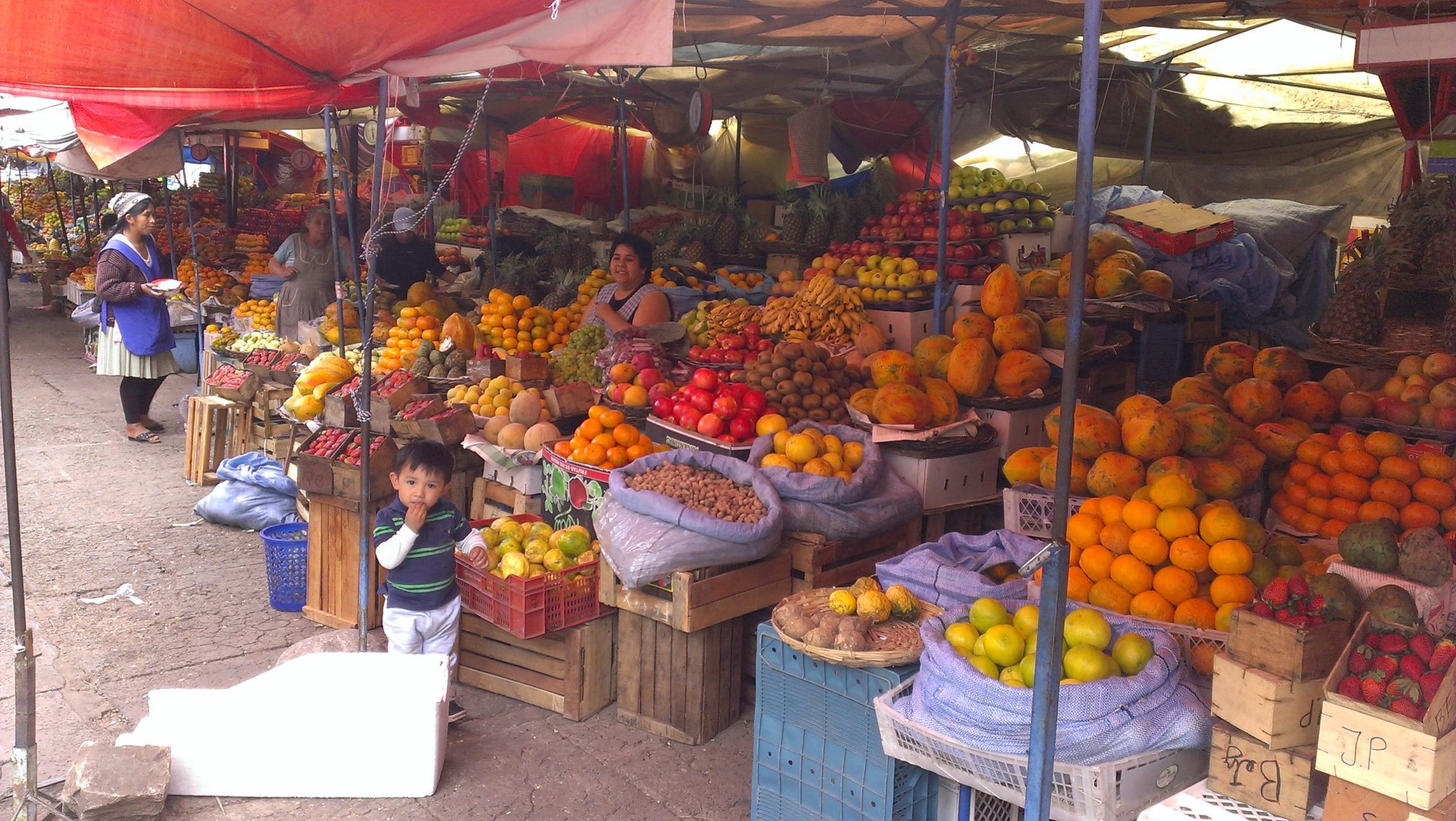Everywhere I heard crying kids but I saw none. "Look it's in the cloth" pointed Jandirk. And so it was a crying cloth and not just one but multiple. And so we realised that Bolivian women just carry their kids in beautiful, colorful sheets on their back mostly without oxygen access. "They cry so they can breath" said always calm Jandirk. That was the first thing we noticed and straight afterwards we noticed long, long, braided hair, all exactly the same length, style and always two, always in the back, sometimes joined with a black wool pocacha. Except for that the ladies wear a variety of colorful pleated skirts, polleras. Brought here by the Spaniards they were forced on the indigenous people, now they are a symbol of a proud indigenous women. To complete the outfit all of them wear practical aprons with pockets and hats. All of the elements change depending on the occasion, wealth, region and simple own taste:) so it's a lively theatre of colours, patterns and different kinds of materials used.
Textiles are definitely the most impressive part of the Bolivian culture. Used as coca bags, table cloths, caps, skirts or just wall art, the most typical ones are still handmade with an extraordinary method pallay which hasn't changed in years and involves a wooden frame, wooden sticks, animal bones as tools and a crazy amount of woolen strings. On the Sunday market in Tarabuco (village famous for it's textiles) we found out a process of 3 months is required to get one medium size textile. And that's by a skilled person obviously. All of the ladies were also very enthusiastic when telling the stories of how the textiles represent everyday life in the village like celebrations, chicha (corn beer) preparation, harvesting or typical legends or, children tales told generation to generation. And they also understood when I complained how my husband Jandirk has all our money and how he forbids me spending any of it. Poor life of a wife, even European one:)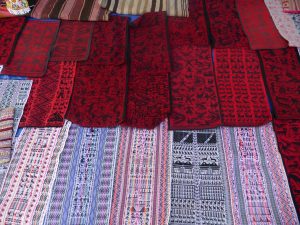
After the market we packed ourselves into a local micro bus. Literally packed beacuse Bolivian buses leave when they are full, full Bolivian style. So if a tiny lady or a kid can fit in between your legs, it is gonna be there. And so we travelled with kids and people on the floor and between the sits. A Bolivian girl sitting next to me was showing me effective sleeping poses, which I couldn't apply just because of my slightly bigger size. She started laughing at my efforts. And we started talking about life, family, what we do in life etc. She was a map seller but probably she didn't look at the maps that much as she didn't know where Poland was. "beautiful hat! Is it from here?" I asked her as an introduction to an interview about typical Bolivian hats. "You want to buy it? I can sell you. There are plenty on the market". I didn't want to buy neither the hat nor the map. But I used the husband excuse. And after a few more questions and another lady joining in the conversation I found out that for example ladies from the La Paz region wear bombín that look like an English gentleman bowler, Chuquisaca region (so around Sucre) they wear more of a cowboy style hats and Tarabuco (village famous for it's textiles) wear indescribable pieces of art. Same counts for the "babe/groceries cape", the most popular are colourful, cheap, China made ones but there are also women (like in Tarabuco) that wear black, handmade pieces with a pattern in the middle.
Visiting local museums and fair trade shops I found out that weavings from Tarabuco are often symetric and mostly show real life scenes in many different colours although funeral scenes are mostly presented in blue, green or purple. Potolo, another village close to Sucre, is more famous for their black-and-red less realistic, scary designs. All absolutely stunningly beautiful. Other regions are still yet to be discovered for us. Too bad the prices of all are less of a Bolivian standard so less accessible for us "poor" backpackers. But we at least get rich in pictures:)))
